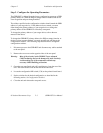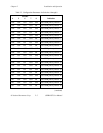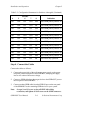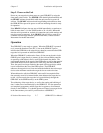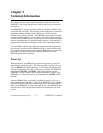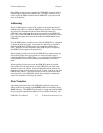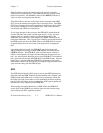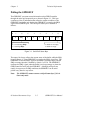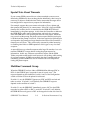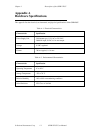Chapter 3 Technical Information
© National Instruments Corp. 3-3 GPIB-BUF User Manual
DMA Controller transfers the data directly to the internal data buffer
without processor intervention. Thus, GPIB transfer rates as high as 900
kbytes/s are possible. The GPIB-BUF turns off the EMPTY indicator as
soon as it starts receiving data from the host.
The buffered data is then sent to the target device connected to the GPIB
OUT port at the maximum acceptance rate of the target device. The GPIB
OUT port is interrupt-driven and is asynchronous with respect to any DMA
activity that is taking place on the GPIB IN port. Both events take place
concurrently and without user intervention.
If very large amounts of data are sent to the GPIB-BUF (greater than the
amount of RAM in the system) and the target device is a very slow data
acceptor (such as a printer or plotter), the internal data buffer of the
GPIB-BUF can become full. If this happens, the FULL indicator on the
front panel illuminates. This is not an error condition, but an indication that
the GPIB transfer rate from the GPIB Talker to the GPIB-BUF has slowed
to approximately the same rate as that of the target device accepting the
data.
Upon being addressed to talk, the GPIB-BUF updates the front panel
address indicators by turning on the TALK indicator and turning off the
LISTEN indicator. The GPIB-BUF waits for all the data in its internal
buffer to be accepted by the target, and then addresses the target device to
talk. Any data sent from the target device to the GPIB-BUF is not buffered,
but is passed directly through the GPIB-BUF to the GPIB IN port. Since no
buffer space is required when the GPIB-BUF is addressed to talk, all the
RAM in the system can be dedicated to providing the largest possible buffer
space for data coming into the GPIB IN port.
EOI
The GPIB End Or Identify (EOI) signal is used by the GPIB Listener(s) to
determine when the GPIB Talker has finished sending data. Without it, the
GPIB Listener must either know in advance the exact amount of data that
the Talker will send or must know of some terminating character sequence
that the Talker will adhere to when sending data. EOI signal reception and
transmission is fully supported on the GPIB-BUF.
When sending data while addressed as a GPIB Talker, the GPIB-BUF
asserts EOI* on the GPIB IN port with any byte received from the target
device that has the EOI* signal line asserted.




